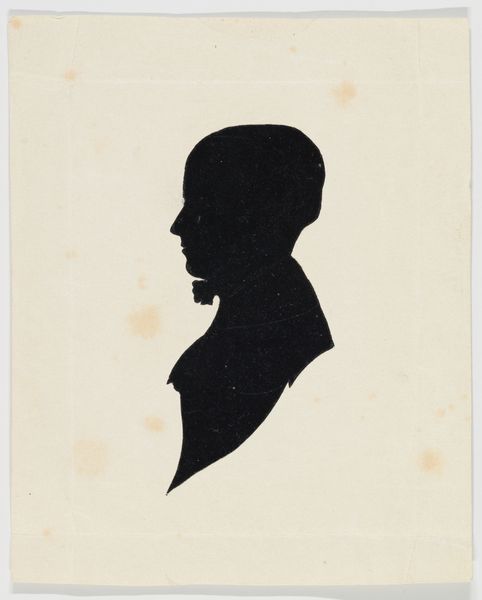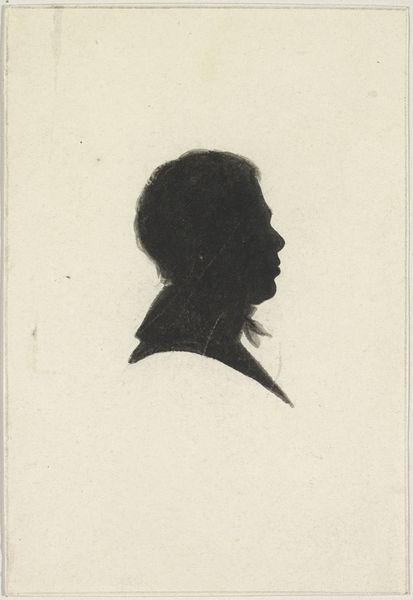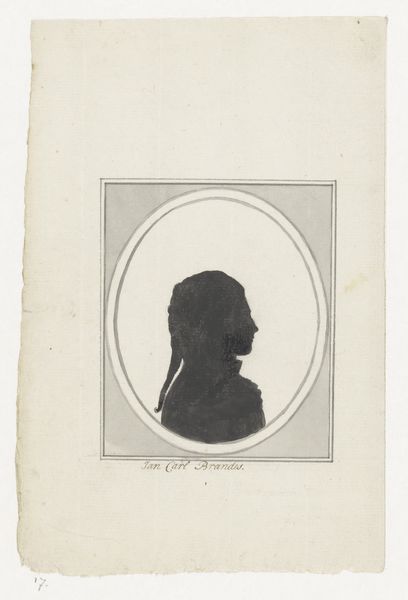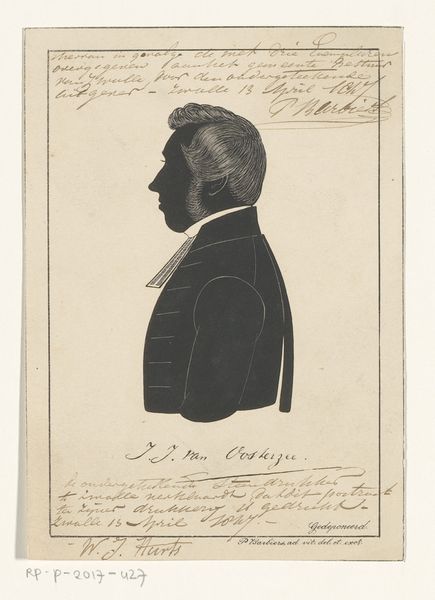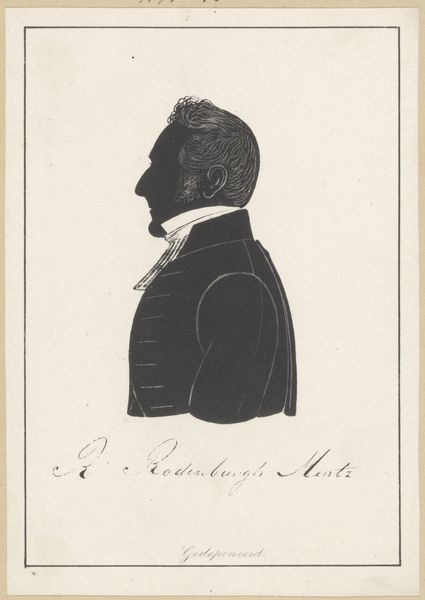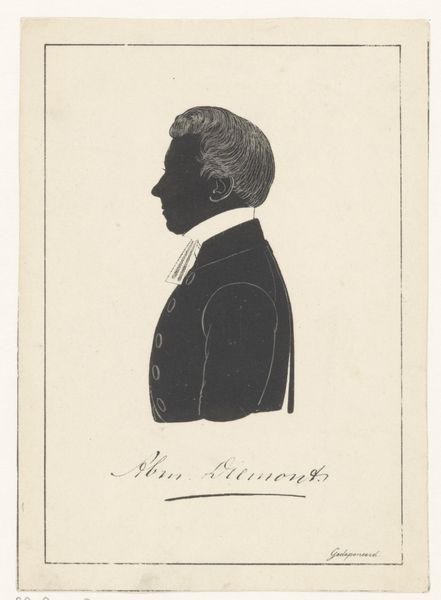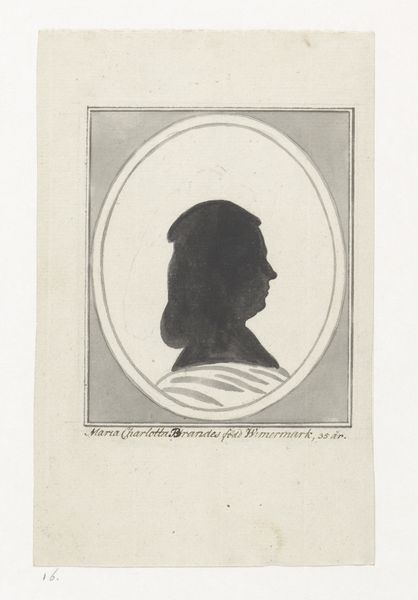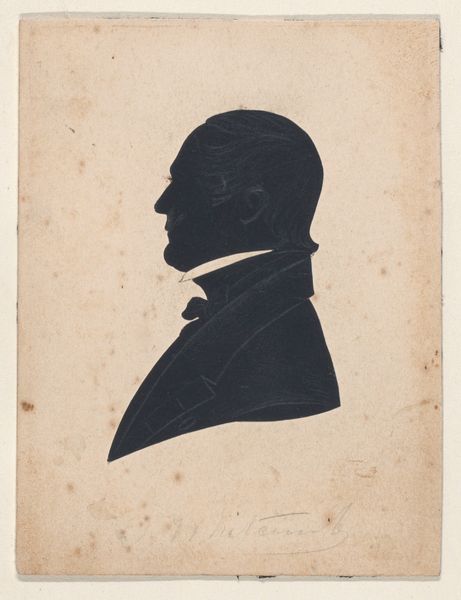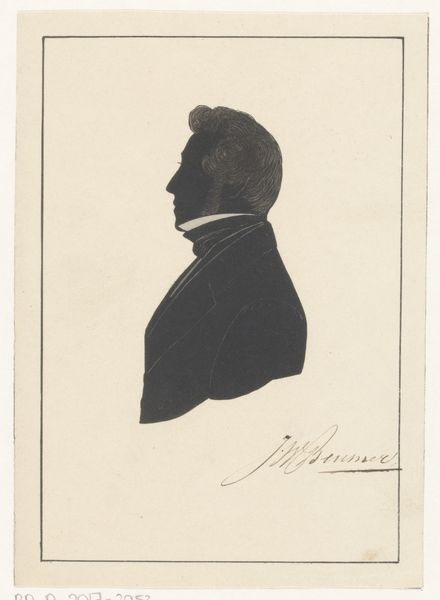
Silhouette of M. Lawrence Libbey, Portland, Maine, Aged 32 1850
0:00
0:00
drawing, print, paper
#
portrait
#
drawing
# print
#
figuration
#
paper
Dimensions: Sheet: 4 15/16 × 3 7/8 in. (12.5 × 9.8 cm)
Copyright: Public Domain
Curator: Galen Jerome Brewer created this silhouette of M. Lawrence Libbey in Portland, Maine, in 1850. The work consists of print and drawing on paper. Editor: My immediate impression is somber and perhaps a bit stark. The dark silhouette against the aged paper feels so definite and permanent, like a shadow cast across time. Curator: Indeed. The use of silhouette as a medium is fascinating here. Note the lack of detail within the figure; it's entirely dependent on outline and negative space to convey likeness. Think about the artistic choices: the hard-edged shadow gives primacy to profile. Editor: This artistic approach says a lot about representation, though. The figure lacks interiority; identity becomes reduced to outlines and class position made apparent by his presentation, the set of his jaw. Does that flattening do a disservice to lived experience? Curator: Perhaps, but the beauty is in its very directness. It allows the artist to focus on essential shapes and forms, distilling the subject down to their most basic, recognizable elements. This formal economy achieves a certain clarity. Editor: But that clarity can also erase nuance! Brewer immortalizes Libbey as an archetype, which, in turn, speaks volumes about power structures of that era, and whose likeness gets valorized, and by whom. Where is Libbey in all this? What can we tell of him beyond his age and status in Portland? Curator: That's an excellent question. And, yet, within this specific cultural and historical context, silhouette portraits held significant symbolic meaning, representing a sort of democratic accessibility within portraiture. Editor: While democratizing representation, let’s also think about who made such works. As a means of recording likeness and marking place and person in time, perhaps silhouette becomes, for Brewer, an accessible tool for participating in emerging art economies. What story does his art tell? Curator: It provides insight into his life and historical situation, not just M. Lawrence Libbey's. The interplay between line, form, subject and artist offers much fodder for consideration. Editor: Precisely, and situating these visual signifiers—light, shadow, positive and negative spaces—inside cultural touchstones allows for more robust interpretations.
Comments
No comments
Be the first to comment and join the conversation on the ultimate creative platform.
